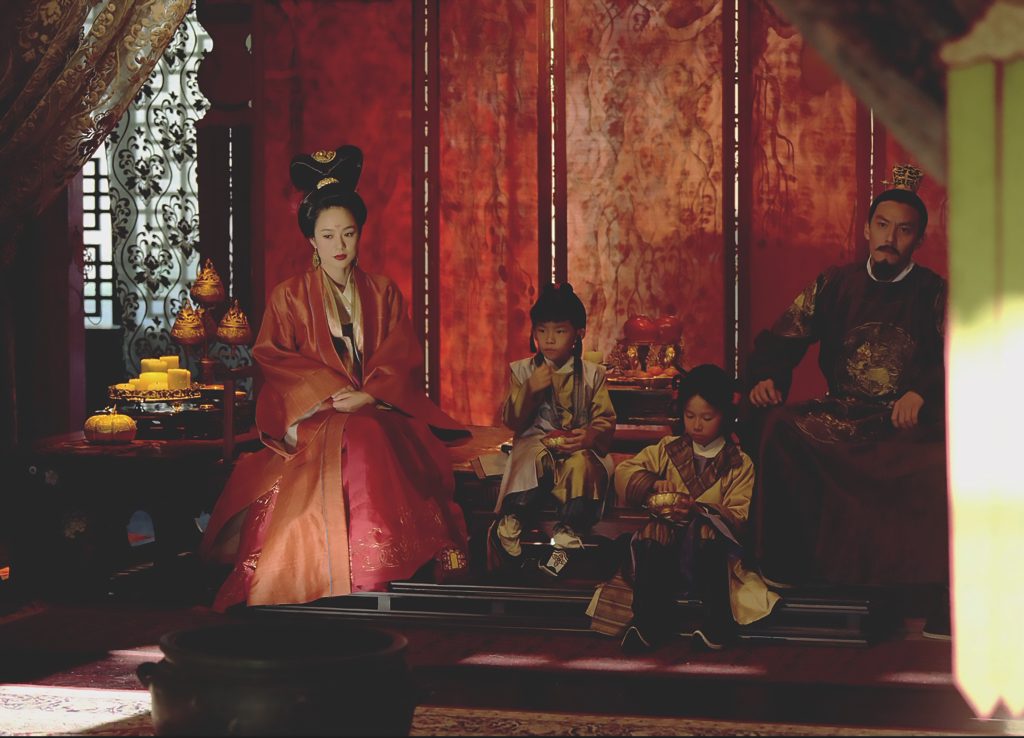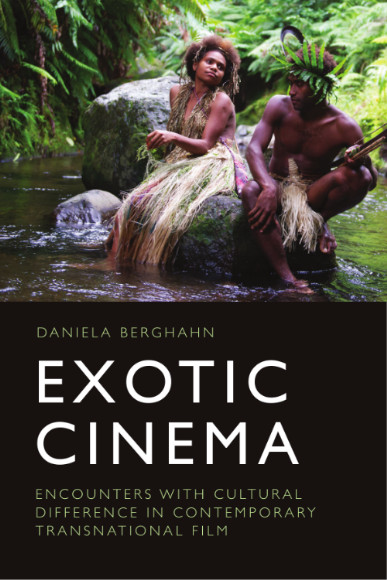
by Daniela Berghahn
Exotic Cinema author Daniela Berghahn chats to EUP on the inspiration behind the book and what surprised her most during the writing process.
Tell us a bit about your book
With my latest book Exotic Cinema, I aim to make a contribution to the urgent agenda of decolonising film studies by critically examining regimes of visuality such as the imperial, the ethnographic and the exotic gaze, which have colonised our minds and ways of looking.
Most of the case studies are examples of contemporary transnational and world cinema. Films like Embrace of the Serpent, a collaboration between the Columbian filmmaker Ciro Guerra and the Indigenous peoples of the Amazon, or Fruit Chan’s Dumplings, about cannibalism in contemporary Hong Kong, illustrate how filmmakers from cultures that have for centuries been the object of the exotic gaze, now deploy strategies of self-exoticism.

The big question is: Do they exoticise their own cultures because they have internalised the state of being looked at and, therefore, cannot help but see themselves through Western eyes? Or do they perform self-exoticism as a calculated artistic choice to pander to the tastes of the hegemonic West? Many critics think so. But I demonstrate that this argument fails to account for the complexities of decentred exoticism in contemporary world cinema, which is often used as an aesthetic and critical intervention that exposes and subverts the old, colonial forms of exoticism.
What inspired you to research this area?
The research reflects my long-standing personal and scholarly interest in cultural difference. For more than a decade I researched the self-representation of migrant and diasporic filmmakers in European cinema. I guess my own migratory experience probably drew me to this topic.
Similarly, my interest in the exotic has a personal dimension to it. It has been triggered by my love of exotic travel and my fascination with films from other cultures. At the time when I was contemplating a shift in the focus of my research from migrant to exotic cinema, I was intrigued to observe how my fascination with the exotic was already so deeply embedded in my subconscious that it featured in one of my dreams. As I reveal in the introductory chapter of Exotic Cinema, there was a baby giraffe in our living room!
What was the most exciting thing about this project?
I was excited to discover the sheer aesthetic versality of exotic world cinema with its vibrant colours and what I theorise as an ‘aesthetics of sensuous indulgence’. It gave my great pleasure to watch visually stunning films like The Scent of Green Papaya, Tanna, The Assassin and In the Mood for Love over and over again and then begin to understand how their alluring alterity contributes to the films’ transnational appeal.

Did you discover anything particularly strange or surprising?
I knew from the start that exoticism has a bad reputation and is widely regarded as ‘non-pc’. Nevertheless, I was surprised to see that, as a result, it has suffered from considerable scholarly neglect. To be sure, there are a handful of excellent studies on contemporary exoticism in postcolonial and film studies, but they date back some twenty years. This recent lack of critical attention presents an unfortunate obstacle if we seek to understand contemporary Western societies’ insatiable appetite for the exotic, be it in the shape of exotic cuisine, world music and the intriguing proliferation of cinematic exoticisms since the 1990s.
In my book Exotic Cinema, I argue that the new decentred exoticism that we encounter in contemporary world cinema deserves our urgent attention, especially at this particular moment in time, when calls for decolonising the film studies curriculum are growing ever louder. And rightly so. While many scholars think that simply de-Westernising the canon of the films we teach will be enough, I think we need to go a lot further than this. We need to learn to decode the visual grammar of exoticism by tracing its iconographic and cultural histories in order to fully apprehend its enduring legacies in the present.

Has your research in this area changed the way you see the world today?
Absolutely, no question about it. Having researched exoticism in depth has made me hyper-aware of its relevance in countless, often unexpected contexts. Whether I go to an art exhibition in Oxford or London, see a new film or stay in a nice hotel, I am perpetually re-assessing my insights into the old and the new decentred exotic. In fact, I record these reflections in the blog posts of my project website, exotic-cinema.org. I enjoy adding content to this website since it allows me to stay engaged with a research project about which I have been passionate for so many years, long after the completion of the book Exotic Cinema.

About the author
Daniela Berghahn is Professor of Film Studies at Royal Holloway, University of London. Her books include Head On (2015), Far-Flung Families in Film: The Diasporic Family in Contemporary European Cinema (2013), European Cinema in Motion: Migrant and Diasporic Film in Contemporary Europe (2010) and Hollywood behind the Wall: The Cinema of East Germany (2005).

About the book
Get 30% off your copy with discount code NEW30
A critical reassessment of the aesthetic strategies and cultural value of exoticism in contemporary transnational cinemas.
Don’t forget to sign up to our mailing list to keep up to date with all of our free content and latest releases!





